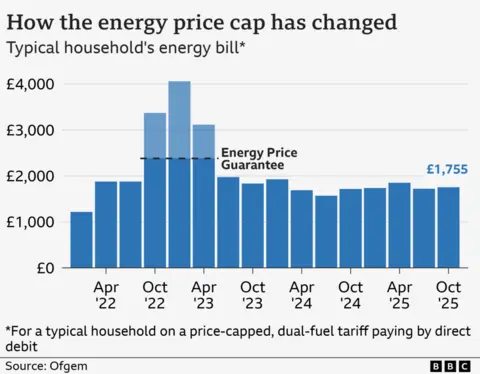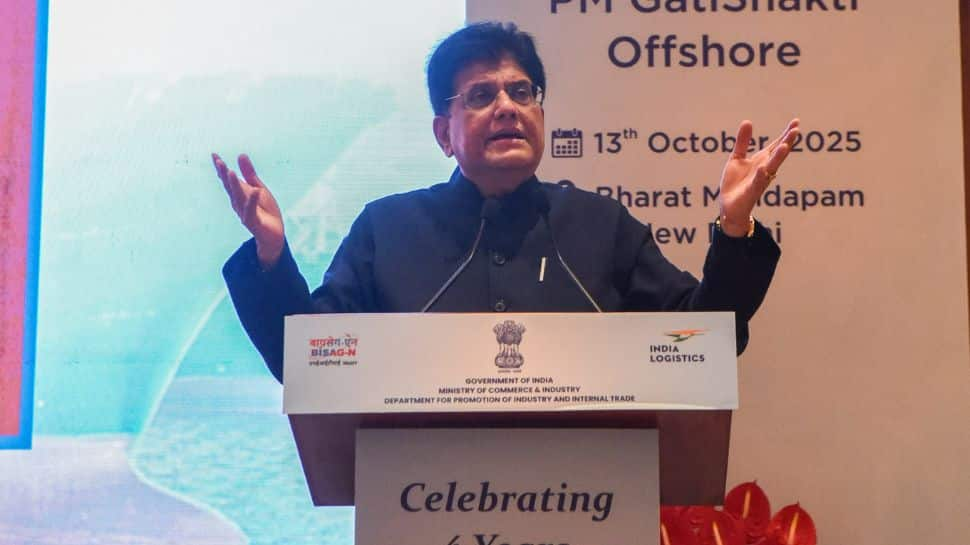Business
UK sanctions Russia’s oil giants over Ukraine war

Britain is targeting Russia’s largest oil companies and the country’s “shadow fleet” of oil tankers in a bid to cut off Vladimir Putin’s ability to fund the war in Ukraine.
The UK government is also pursuing a major Indian oil refinery and four Chinese oil terminals in a package of 90 new sanctions.
Chancellor Rachel Reeves said the move was expected to have a significant impact on Russia’s economy and its ability to sustain military operations in Ukraine.
“We are sending a clear signal: Russian oil is off the market,” she said ahead of a meeting in Washington DC with global counterparts to discuss Russian sanctions.
Reeves said the government was “significantly stepping up the pressure on Russia and Vladimir Putin’s war effort.”
Russia’s two largest oil companies – Lukoil and Rosneft – will be hit with sanctions, Reeves said on the sidelines of the International Monetary Fund’s (IMF) annual meeting.
“At the same time, we are ramping up pressure on companies in third countries, including India and China, that continue to facilitate getting Russian oil onto global markets,” she said.
“There is no place for Russian oil on global markets and we will take whatever actions are necessary to destroy the capability of the Russian government to continue this illegal war in Ukraine.”
The government was also sanctioning 44 tankers that operate in Russia’s “shadow fleet” transporting oil around the world, Reeves said in a joint statement with the Foreign Secretary Yvette Cooper.
The two Russian oil firms export 3.1 million barrels of oil per day. Rosneft is responsible for nearly half of all Russian oil production, which makes up 6% of the global output, according to the government.
Also on the sanction list is India’s Nayara Energy Limited, which the government said imported 100 million barrels of Russian crude oil worth more than $5bn (£3.75bn) in 2024 alone.
Cooper said: “Today’s action is another step towards a just and lasting peace in Ukraine, and towards a more secure United Kingdom.”
The announcement comes as the G7, a grouping of some of the world’s most advanced economies, prepares to consider a plan to effectively seize hundreds of billions from the proceeds of Russian investments, frozen since the invasion of Ukraine.
A vast bulk of Russia’s assets are held as cash at the European Central Bank, after its underlying bond investments matured.
The European Union (EU), where the bulk of funds are held, had been reluctant to pursue the wider plan, but appears to be developing a way round legal concerns. It will be considered at an EU summit next week.
Ukraine has significant funding needs as the war continues, both in arms and reconstruction.
Earlier this year, the UK joined the US in directly sanctioning energy companies Gazprom Neft and Surgutneftegas.
At the time the then Foreign Secretary, David Lammy, had said it would “drain Russia’s war chest – and every ruble we take from Putin’s hands helps save Ukrainian lives”.
Business
Big banks like JPMorgan Chase and Goldman Sachs are already using AI to hire fewer people

Jamie Dimon, chief executive officer of JPMorgan Chase & Co., at the Institute of International Finance (IIF) during the annual meetings of the IMF and World Bank in Washington, DC, US, on Thursday, Oct. 24, 2024.
Kent Nishimura | Bloomberg | Getty Images
The era of artificial intelligence on Wall Street, and its impact on workers, has begun.
Big banks including JPMorgan Chase and Goldman Sachs are unveiling plans to reimagine their businesses around AI, technology that allows for the mass production of knowledge work.
That means that even during a blockbuster year for Wall Street as trading and investment banking spins off billions of dollars in excess revenue — not typically a time the industry would be keeping a tight lid on headcount — the companies are hiring fewer people.
JPMorgan said Tuesday in its third-quarter earnings report that while profit jumped 12% from a year earlier to $14.4 billion, headcount rose by just 1%.
The bank’s managers have been told to avoid hiring people as JPMorgan deploys AI across its businesses, CFO Jeremy Barnum told analysts.
JPMorgan is the world’s biggest bank by market cap and a juggernaut across Main Street and Wall Street finance. Last month, CNBC was first to report about JPMorgan’s plans to inject AI into every client and employee experience and every behind-the-scenes process at the bank.
The bank has “a very strong bias against having the reflexive response to any given need to be to hire more people,” Barnum said Tuesday. The bank had 318,153 employees as of September.
JPMorgan CEO Jamie Dimon told Bloomberg this month that AI will eliminate some jobs, but that the company will retrain those impacted and that its overall headcount could grow.
‘Constrain headcount’
At rival investment bank Goldman Sachs, CEO David Solomon on Tuesday issued his own vision statement around how the company would reorganize itself around AI. Goldman is coming off a quarter where profit surged 37% to $4.1 billion.
“To fully benefit from the promise of AI, we need greater speed and agility in all facets of our operations,” Solomon told employees in a memo this week.
“This doesn’t just mean re-tooling our platforms,” he said. “It means taking a front-to-back view of how we organize our people, make decisions, and think about productivity and efficiency.”
The upshot for his workers: Goldman would “constrain headcount growth” and lay off a limited number of employees this year, Solomon said.
Goldman’s AI project will take years to implement and will be measured against goals including improving client experiences, higher profitability and productivity, and enriching employee experiences, according to the memo.
Even with these plans, which is first looking at reengineering processes like client onboarding and sales, Goldman’s overall headcount is rising this year, according to bank spokeswoman Jennifer Zuccarelli.
Tech inspired?
The comments around AI from the largest U.S. banks mirror those from tech giants including Amazon and Microsoft, whose leaders have told their workforces to brace for AI-related disruptions, including hiring freezes and layoffs.
Companies across sectors have become more blunt this year about the possible impacts of AI on employees as the technology’s underlying models becomes more capable and as investors reward businesses seen as ahead on AI.
In banking, the dominant thinking is that workers in operational roles, sometimes referred to as the back and middle office, are generally most exposed to job disruption from AI.
For instance, in May a JPMorgan executive told investors that operations and support staff would fall by at least 10% over the next five years, even while business volumes grew, thanks to AI.
At Goldman Sachs, Solomon seemed to warn the firm’s 48,300 employees that the next few years might be uncomfortable for some.
“We don’t take these decisions lightly, but this process is part of the long-term dynamism our shareholders, clients, and people expect of Goldman Sachs,” he said in the memo. “The firm has always been successful by not just adapting to change, but anticipating and embracing it.”
Business
Energy standing charge plans could backfire, MPs told

Kevin PeacheyCost of living correspondent and
Joshua NevettPolitical reporter
 Getty Images
Getty ImagesEnergy bosses have given a cool reception to regulator Ofgem’s plan to overhaul standing charges.
Under Ofgem’s plans announced in September, all suppliers in England, Scotland and Wales will offer at least one tariff in which standing charges are lower but customers then pay more for each unit of energy used.
But appearing before a committee of MPs, the chief executives and senior management of the UK’s biggest suppliers questioned the outcome of such a move.
Some called for the abolition of standing charges, while others say the proposals would make the issue worse for customers.
Rachel Fletcher, director of regulation and economics at the UK’s largest supplier Octopus Energy, said: “I think a lot of the concern about standing charges is just that people can’t afford to pay their bill.
“Where Ofgem is going is not going to solve any problems, it could make things worse.”
The bosses, giving evidence to the Energy Security and Net Zero Committee, pointed out that the major problem for some customers is that the cost of energy was unaffordable, and some could make the wrong choice when choosing tariffs with low standing charges.
Many called for a social tariff, in which those who are on low incomes receive a discount which is likely to be paid for by other billpayers.
Energy UK, which represents suppliers, recently called for “enduring” government support for those struggling to pay their bills.
Ministers have pointed to the extension of the Warm Home Discount to those on benefits, which knocks £150 off winter bills for one in five households. It is funded by a rise for all billpayers.
Ofgem’s price cap, which sets a maximum price per unit of energy for millions of people in England, Scotland and Wales who are on variable tariffs, rose by 2% in October.
The amount owed to energy suppliers by customers has already increased to a new record high of £4.4bn.
The data, which covers the period from April to June, shows that more than one million households have no arrangement to repay their debt, also a record high.

At the hearing, Simone Rossi, chief executive of EDF UK, was among the bosses who told MPs asking about the climate challenge that the price of electricity compared with a gas was a disincentive to customers wanting to go electric. It was also expensive in the UK compared with other countries.
On Tuesday, Energy Secretary Ed Miliband told the BBC shifting green levies from electricity bills to gas was one option being considered to lower energy costs for households.
But Miliband said no decisions had been made and insisted he would not change energy policy costs “in a way that damages the finances of ordinary people”.
While rebalancing energy policy costs could lower electricity bills, it could increase them for householders using gas boilers.
When asked if the rebalancing of energy bills was being reviewed by the UK government, Miliband said: “We’ve always said we will look at ways of lowering bills for people and that’s obviously one of the options.
“I just want to say on that, we will only ever do that in a way that’s fair and genuinely reduces bills for people.”
‘Fair’ bills
Policy costs are effectively government taxes used to fund environmental and social schemes, such as subsidies for renewables.
These costs made up about 16% of an electricity bill and 6% of a gas bill last year, according to research by the charity Nesta.
The Climate Change Committee has long recommended removing policy costs from electricity bills to help people feel the benefits of net-zero transition.
The government’s climate adviser said the move would make switching to electric technologies, such as heat pumps, cheaper and encourage take-up.
One option – backed by Energy UK – is shifting policy costs from electricity bills to gas.
Energy UK analysis shows that over 15 years, households using an air source heat pump, which is an electrically powered system, could save up to £7,000, compared to those with gas boilers, if energy bills were fully rebalanced.
But such a move would result in an increase in bills for households that use gas for heating.
When asked if that was one option the government was considering, Miliband said: “I’m not going to get into any of the detail of this.
“All I am saying is I’ve always said I’m cautious about this issue because fairness is my watchword.
“So if we can do it in a way that’s fair, that’s obviously something we’re seriously looking at.
“But no decisions have been made on that. I’m not going to do it in a way that damages the finances of ordinary people.”
At the committee, Chris O’Shea, chief executive of Centrica, said this would be a subsidy from the poor to the rich.
Business
“India Will Not Only Meet But Possibly Exceed IMFs Estimates,” Says Union Minister Piyush On India’s Booming GDP

New Delhi: Union Minister of Commerce & Industry, Piyush Goyal highlighted on Wednesday the International Monetary Fund’s (IMF) recent revision of India’s growth estimate, which increased from 6.4% to 6.6% for this year, stating that this upward revision is an indication to India’s strengthened economy, driven by increased consumer spending, accelerated investment in infrastructure, and a confident business atmosphere.
He also attributed the growth to the government’s proactive measures, including reduced GST rates, which have led to increased consumer spending and GST collection. Goyal futher showed optimism, stating that with a 7.8% GDP growth in the first quarter, India is set not only to meet but possibly exceed the IMF’s estimates, firming its position as one of the world’s fastest-growing economies.
While speaking to reporters outside the Indian Chemicals and Petrochemical Conclave 2025 held at Bharat Mandapam, Goyal said, “The International Monetary Fund (IMF) has recently revised its growth estimates for India, increasing the projected growth rate from 6.4% to 6.6% for this year. This reflects India’s strengthened economy, the country’s confident atmosphere, increased consumer spending due to reduced GST rates, and accelerated investment in infrastructure. While global growth is expected to weaken to 3.2% this year, India’s growth is nearly double that rate. The first quarter saw a 7.8% GDP growth rate, and it is anticipated that India will not only meet but possibly exceed the IMF’s estimates, continuing to be one of the world’s fastest-growing economies. PM Modi’s vision for a developed India by 2047 seems promising.”
Goyal also highlighted the recent surge in GST collection in September, following the rate cuts, and attributed it to Prime Minister Modi’s vision for a developed India by 2047.
“Despite initial concerns about reduced spending and GST collection in August due to anticipated GST rate cuts, September saw increased GST collection, and the market witnessed a surge in consumer spending post the rate cuts. PM Modi has gifted the Indian consumers, especially the lower and middle classes, with these economic benefits.” Goyal added.
On Wednesday, Minister Goyal addressed the distinguished captains of industry at the Indian Chemicals and Petrochemical Conclave 2025 held at Bharat Mandapam, New Delhi, emphasising India’s pathway to global leadership through innovation, technology, and competitiveness.
Applauding the sector’s vital role in nation-building, Goyal said that the chemicals and petrochemicals industry is “omnipresent in every facet of modern life, from agriculture to automobiles, healthcare to infrastructure and must be at the forefront of developing cutting-edge solutions that power India’s growth.”
Reflecting on India’s vision for Viksit Bharat @2047, the Minister called upon industry leaders to set ambitious goals, urging the sector to aspire to become a USD 1 trillion industry by 2040, thereby contributing significantly to India’s target of a USD 35 trillion economy by 2047.
“Our biggest challenge as a nation is that we often don’t aim big enough,” Goyal said. “Innovation, science, and research must be the backbone of India’s progress. The chemicals and petrochemicals sector has the potential to be a global champion in technology-driven growth and sustainability.”
He noted that advanced nations have achieved prosperity through long-term investments in research and development, and India must similarly anchor its growth in innovation. Goyal highlighted that even oil-rich nations are diversifying into renewable energy and clean technologies, recognising that the future belongs to value-added, sustainable industries.
Acknowledging the industry’s strategic importance to the economy, he emphasised collaboration across the value chain and the need for greater self-reliance in critical materials, while also integrating with global markets to enhance competitiveness.
“We must support each other within our value chains, strengthen domestic capabilities, and at the same time, engage confidently with the world,” the Minister added. “A vibrant, innovative chemicals and petrochemicals sector will be central to India’s journey toward becoming a developed economy.”
CII s report on “People Powering Progress: Building India’s Chemical Workforce for a USD 1 Trillion Industry” was released during the Special Plenary Session with Piyush Goyal, Hon’ble Minister of Commerce and Industry, at the 7th edition of Indian Chemicals and Petrochemicals Conference 2025.
The report captures insights on the transformative potential of India’s chemical industry with projections to reach USD 400-450 billion by 2030 and potentially USD 850-1,000 billion by 2040, driven by global supply chain dynamics, domestic demand, and technological advancements. The sector, contributing 7% to India’s GDP and 14% of industrial output, serves as a catalyst for growth across a wide range of sectors.
R Mukundan, President Designate, CII; Chairman, CII National Committee on Chemicals and Petrochemicals; and Managing Director & CEO, Tata Chemicals Ltd., underlined the role of trade and technology partnerships in shaping the sector’s global positioning.
Opportunities opened through Free Trade Agreements (FTAs) enable the strengthening of the ecosystem for R&D, technology partnerships, and trade linkages. These efforts foster customer development and position the chemical industry as a resilient, future-ready global player. Collaboration and partnerships in research and technology will power India’s next leap, strengthening our ecosystem for R&D and global collaboration to make India a chemical manufacturing powerhouse.
Salil Singhal, Chairman of the CII Indian Chemicals and Petrochemicals Conference, Member of the SCALE Committee, and Chairman Emeritus of PI Industries, welcomed recent policy reforms that support the industry. The unveiling of the HSN Code Mapping Guidebook, along with simplified regulatory pathways, strengthened credentials, and empowered MSMEs, marks a landmark reform.
These initiatives bring clarity, precision, and responsiveness to policy frameworks, creating opportunities for meaningful participation in India’s growth story, particularly in the chemical sector.
Chandrajit Banerjee, Director General, CII, highlighted the critical role of government initiatives in strengthening the sector’s competitiveness. The chemical sector’s significant contribution to manufacturing is widely recognised. Within the broad spectrum of Make in India, initiatives such as the Production Linked Incentive (PLI) scheme, PM Gati Shakti, and the National Logistics Policy have played a crucial role in integrating the chemicals and petrochemicals industry into India’s broader manufacturing ecosystem.
-

 Business1 week ago
Business1 week agoTata Capital IPO: Rs 15,512 crore IPO fully subscribed; stock market debut on Oct 13 – The Times of India
-

 Tech1 week ago
Tech1 week agoJony Ive Says He Wants His OpenAI Devices to ‘Make Us Happy’
-

 Tech6 days ago
Tech6 days agoApple Took Down ICE-Tracking Apps. Their Developers Aren’t Giving Up
-

 Sports1 week ago
Sports1 week agoBills benched WR Coleman for disciplinary reasons
-

 Tech5 days ago
Tech5 days agoMen Are Betting on WNBA Players’ Menstrual Cycles
-

 Entertainment1 week ago
Entertainment1 week agoHilaria Badlwin admits she takes parenting tips from step-daughter Ireland Baldwin
-

 Sports1 week ago
Sports1 week agoCubs vs. Brewers (Oct 6, 2025) Live Score – ESPN
-

 Tech1 week ago
Tech1 week agoAs long as the cybercriminals’ business model works, companies are vulnerable to attack






